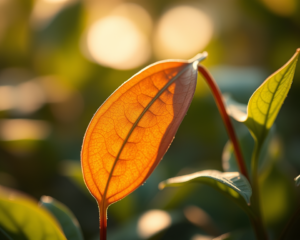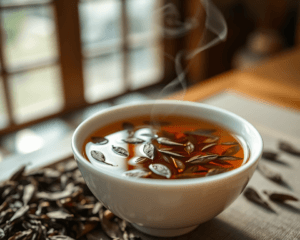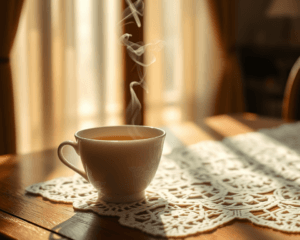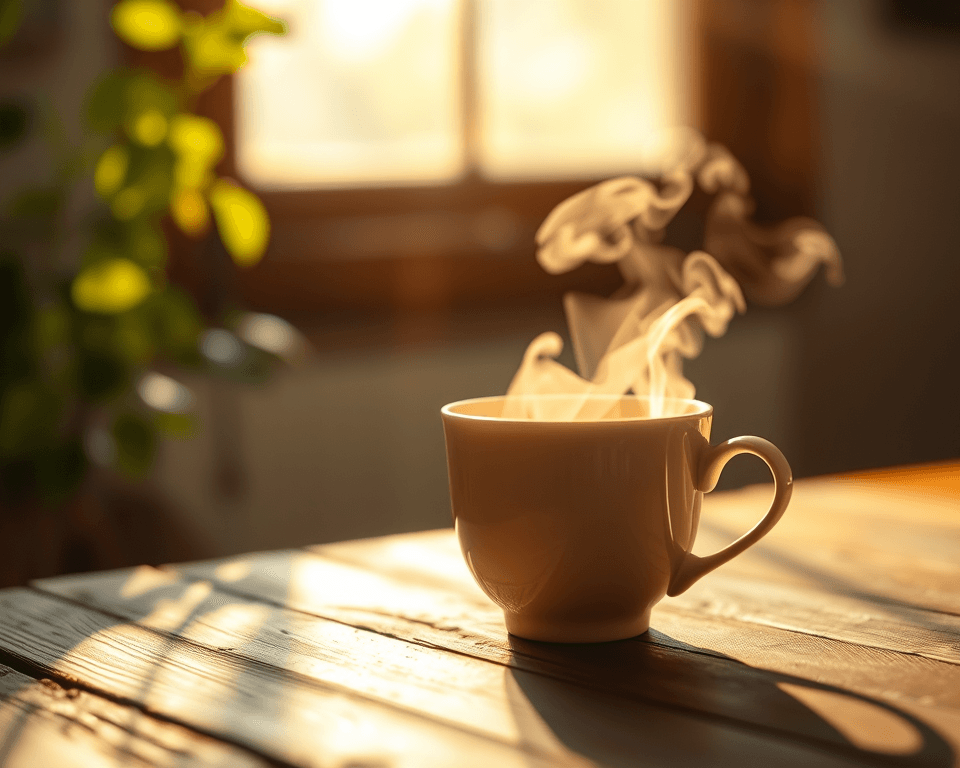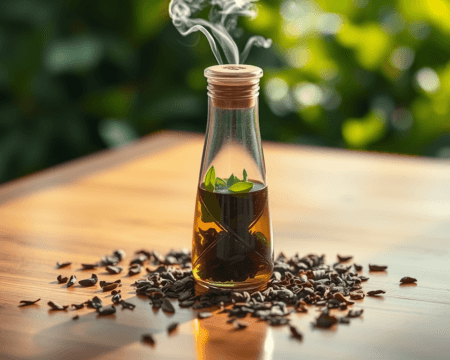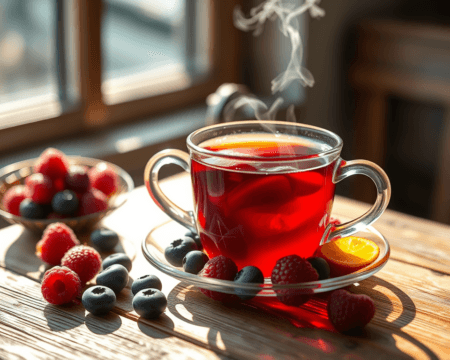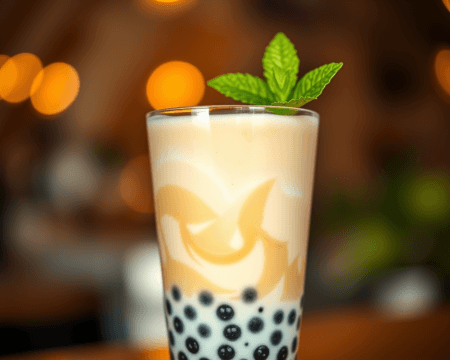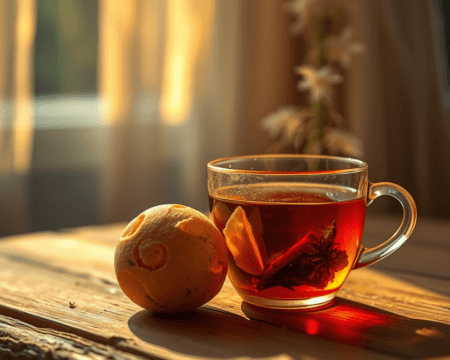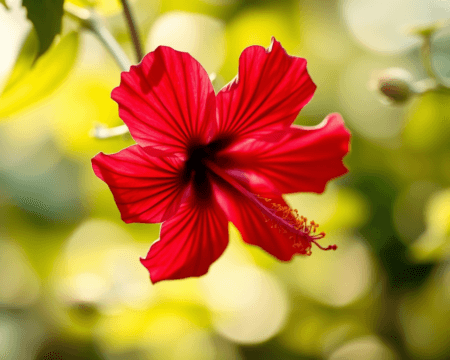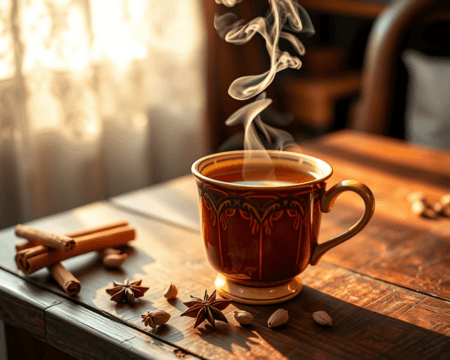Imagine this: you’re all set for a cozy afternoon with a hot cup of tea, but the moment you take a sip, it’s like you bit into a lemon peel. Bitter! What went wrong? Let’s peel back the layers of tea bitterness together. This isn’t just about avoidance; it’s about mastering the art and science of brewing a perfect cup that hits all the right notes.
Key Takeaways
- Oversteeping tea is a primary cause of bitterness; always watch your steeping time.
- The quality of water can make or break your brew; invest in good water for the best flavor.
- Different types of tea naturally bring varying levels of bitterness—know your tea!
- Proper temperature control is key; follow optimal brewing temperature guidelines for your tea type.
- Fresh, quality tea leaves can elevate your experience and reduce bitterness.
Common Causes of Bitterness in Tea
Oversteeping and Its Effects
Oversteeping is like trying to squeeze every drop of goodness from your tea leaves—eventually, you just end up with a less-than-pleasant brew. When you leave those leaves steeping too long, they start releasing tannins and other compounds that contribute to that nasty bitter taste. The extraction process can work wonders if you stick to the optimal steeping times, but if you keep that brew going past its prime, welcome to astringency city.
I remember the first time I brewed a fine black tea—left it in a minute or two over the mark. It was so harsh that I couldn’t finish my cup. Stick to the recommended steeping time and watch the clock. For instance, black and oolong tea typically require 3–5 minutes, while green tea hovers around 2–4 minutes.
Water Quality and Its Impact
How’s your water treating you? It seems trivial, but trust me—water quality matters. You might not think much about it, but if you’re using tap water loaded with chlorine or high mineral content, that flavor will seep into your cup. Hard water can dull your brew, while soft water might give you a clearer tea, but too much softness can also lead to flat flavors.
I switched to filtered water and, man, what a difference! The mineral content in good quality water enhances flavor clarity. When you’re brewing, aim for the optimal water temperature, typically around 190°F for black tea and 170°F for green tea. Remember—never boil your brew water; it can char those delicate flavor profiles.
Type of Tea and Its Natural Bitterness
Let’s talk tea types. Not all teas are created equal. Black tea, for instance, naturally has higher bitterness levels due to its oxidation process. Green and white teas have lower caffeine and bitterness profiles, making them lighter on the palate. Did you know that even within the same type, like black tea, there can be variations? Darjeeling tends to be floral and less bitter, while Assam can pack a punch.
When you’re choosing your tea, think about the flavor notes you enjoy. A rich, malty flavor might lead you to a stronger black tea, whereas a delicate green might satisfy your craving for something lighter. Knowing the bitterness levels of different tea profiles helps you make better choices when brewing and enjoying.
Tips for Brewing Tea Properly to Avoid Bitterness
Optimal Temperature Control
Temperature isn’t just a suggestion—it’s a rule! The right temperature can dramatically affect the flavor profile of your tea. For example, brewing black tea at 212°F may seem appropriate, but dropping it to around 200°F ensures you don’t extract too much bitterness and overpower that nice malty flavor.
Keep a thermometer handy or eyeball it like a pro. The right heat will help draw out those delightful aromatic compounds while keeping the bitter stuff at bay. Plus, it’s easier than you think—just boil your water and let it cool for a minute or two for a more mellow brew.
Perfecting Steeping Time
Setting a timer may seem like overkill, but trust me—you’ll bless yourself later! Let’s be real: those few minutes make all the difference. Brew tea in intervals, taking a taste test at the recommended time. If you like it bolder, you can always steep for an extra minute or so. It’s all about that flavor development game.
Each tea has its brewing guide, and sticking to those recommendations can really save your taste buds. For instance, if you’re brewing a delicate green tea, stick to around 2-3 minutes. If you’re feeling adventurous with a robust black, go for 3-5 minutes but resist the temptation to stir too much.
Choosing the Right Tea Leaves
Quality matters big time. Jumping on any dusty old tea bag just won’t cut it. Loose leaf tea tends to have a better flavor profile thanks to higher quality leaves. You’ll want to hunt down fresh ingredients for a more vibrant mug. Brands like Harney & Sons, David’s Tea, and Teavana provide fantastic options—each with its own unique flavor profile.
When selecting tea leaves, consider freshness. Tea that’s been sitting forever loses its magic. Opt for recent harvests and always check expiration dates. A good tea can elevate your brewing experience and dramatically reduce bitterness. Fresh, quality tea pairs beautifully with proper prep, and you’ll be amazed at how much better your cup can taste.
Cultural and Regional Differences in Tea Brewing
Influences of Traditional Brewing Methods
Every culture has its quirks when it comes to brewing tea. Whether it’s the precision of Chinese Gongfu tea ceremonies or the hearty, no-nonsense British afternoon teas, these practices all influence how bitterness is embraced or mitigated. The methodologies vary significantly, leading to unique brews that tell a story.
In Japan, the attention to detail in making matcha involves specific whisking techniques that promote a different texture and flavor, minimizing bitterness while maximizing umami. It’s about appreciating every sip and understanding the significance of the process. Take cues from these traditions, and incorporate some of those meticulous methods into your brewing routine. You’ll find that the experience becomes almost as satisfying as the tea itself.
Misconceptions About Tea Types and Bitterness
It’s time to bust some myths! There’s so much misinformation out there about tea types and their bitterness levels. Many think all black teas are harsh and overpowering, while others mistakenly believe green teas are always bland. In reality, the bitterness and flavor of each type depend heavily on personal preference, the specific variety, and how it’s prepared.
Take the time to explore different types and understand that bitterness is just one expression of flavor—often it’s a balancing act between sweetness and strength. Don’t shy away from a tea just because it’s “heavier”—you might be surprised at its complexity when prepared the right way. This understanding opens up a world of flavors, helping you appreciate each cup.
The Science Behind Tea Bitterness
Chemical Processes Affecting Flavor
Ever wonder why some teas pack a punch while others are like a soft hug? That’s where chemistry comes into play. Polyphenols and catechins are the unsung heroes in this equation—these compounds influence not just bitterness, but also your overall tea experience. The extraction of these flavor compounds needs to strike a balance; too much of a good thing can lead to that unbearable bitterness.
Understanding the chemical reactions during brewing gives you a leg up. By tweaking the temperature and steeping time, you can create your own flavor symphony. Aim for a tea with balanced taste thresholds, and you’ll be well on your way to sipping in bliss.
The Role of Tannins in Bitterness
Tannins play a crucial role in that bitter bite we often cringe at. Think of them as the flavor complexity creators; they add depth but can also crash that party if not managed properly. Too much tannin leads to that dry, puckering sensation, reminiscent of biting into a green banana.
You want to achieve a nice balance in flavor. Astringency factors are significant, and the interplay between herbal components and more traditional teas helps create a complex sensory experience. Aim for teas that offer a nice blend of bitterness without overwhelming your palate, adapting your brewing techniques as necessary.
By navigating the landscape of tea bitterness with both knowledge and a passion for flavor, you’ll find it easier to enjoy what once felt unattainable. Cheers to exploring, brewing, and sipping your way to tea perfection!
Frequently Asked Questions
How can I avoid bitterness in my tea?
To avoid bitterness, pay attention to the steeping time and temperature. Use a timer to ensure you don’t oversteep and follow recommended temperature guidelines for each tea type. Starting with high-quality tea leaves can also help enhance flavor and reduce bitterness.
What type of water is best for brewing tea?
The best water for brewing tea is clean, fresh, and free from impurities. Filtered or spring water is ideal as it enhances the natural flavors of the tea, while hard or overly chlorinated water can affect taste negatively.
How do I know the ideal steeping time for my tea?
The ideal steeping time varies by tea type. Generally, green tea requires 2-3 minutes, black tea 3-5 minutes, and herbal teas can steep for 5-7 minutes. Always check packaging for specific recommendations to ensure optimal flavor.
Does the temperature of my water really matter?
Yes, water temperature is crucial in determining the extraction of flavors and compounds from tea leaves. For instance, black tea usually requires boiling water (around 200-212°F), while green tea is best steeped at lower temperatures (160-180°F).
Can I reuse tea leaves?
Yes, many teas can be reused, especially high-quality loose leaf varieties. However, subsequent brews may require longer steeping times to extract flavor since some compounds are released during the first steep.
How does the quality of tea leaves affect bitterness?
Fresh, high-quality tea leaves are less likely to produce bitterness compared to stale or low-quality leaves. They retain better flavor compounds, leading to a more balanced and enjoyable cup with reduced astringency.
Are there specific teas that are naturally more bitter?
Yes, some tea types, such as certain black and green teas, can have naturally high levels of tannins which contribute to bitterness. Understanding the characteristics of each tea can help you select those that match your taste preferences.
What should I do if my tea turns out bitter?
If your tea is bitter, consider adjusting your steeping time or temperature for next time. You can also dilute it with water or add milk or honey to balance the flavors in your current brew.
How can I improve the flavor of my tea without reducing steep time?
To enhance flavor without extending steep time, try using more tea leaves or a finer tea variety. Additionally, you can experiment with tea blends or add flavorings like citrus or herbs to enrich the experience.
